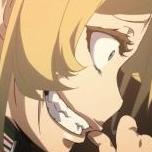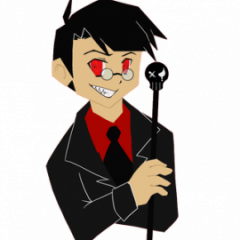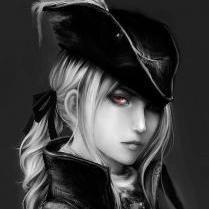Leaderboard
Popular Content
Showing content with the highest reputation on 05/05/19 in all areas
-
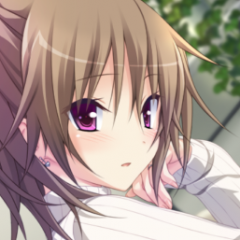
Anyone who knows japanese culture a bit better
Plk_Lesiak and one other reacted to Yuuko for a topic
The best romance I have found is in mangas though2 points -
This is partly an issue of genre and partly an issue of medium. The "harem" genre features a protagonist surrounded by girls competing for his attention/affection; this competition and the antics that result are often a thematic focus. Resolving that competition essentially entails a genre shift, which risks losing your audience. Visual novels resolve this issue by splitting games into a common route and several heroine routes (and sometimes a "harem" route). Visual novels are relatively cheap to produce compared to the time spent consuming them and are sold up-front as a complete product, so forking the narrative into multiple parts, some of which may not be consumed by each user, is commercially viable. Anime are more expensive to produce and typically represent linear, serialized experiences that have to fill broadcast time slots and sustain viewership over time. If you air something that doesn't interest a viewer, you risk losing him permanently; the viewer can't just skip to the alternate "route" for the day. As a result, harem anime are often compelled to appeal to the lowest common denominator.2 points
-

Anyone who knows japanese culture a bit better
adamstan and one other reacted to Plk_Lesiak for a topic
I think I'm with Clephas and others pointing to genre conventions and shitty business practices more than Japanese culture as such. If even non-eroge VNs can have normal romance progression, I blame the inconclusive/grotesquely stretched out character of most shounen & seinen manga, and the stress on fanservice and harem tropes over genuine romance. As you said yourself, in shoujo, where you are way more likely to have a single love interest for the protagonist and romance scenarios developed with genuine care, you get more expressions of affection and even mild sex scenes. They just fit the formula. Generally, romance in anime/manga sucks more often than not. VNs are really the way to go in this regard, as they strive to tell complete stories, rather than tease you for 800 chapters before delivering something even vaguely conclusive.2 points -
Anyone who knows japanese culture a bit better
nekofuwafuwa and one other reacted to Stormwolf for a topic
I'm from Norway. They're most definitely from a foreign land with a very different culture. Which is why i'm making this thread.2 points -

Plk Lesiak’s Shovelware Adventures: AJTilley.com
Templarseeker reacted to Plk_Lesiak for a blog entry
Before Dharker Studio became the semi-competent producer of smut we know and (occasionally) love today, its founder, AJ Tilley, made a name for himself through his personal VN publishing brand, AJTilley.com. Throughout 2015 there has been an impressive number of decently-sized games released under that label, the whole endeavour fuelled by a never-ending stream of crowdfunding campaigns, making Tilley one of the most notable creators on the fledgeling EVN scene. At the same time, his activities were spawning increasing controversies, mostly over the appalling quality of some of the games in question and overuse of Kickstarter. In April 2016, after just a year and a half of presence within the EVN scene, the infamy around the label became intense enough that Tilley himself decided to terminate it, removing all of its online presence and transferring all the rights to his company’s “development arm”, Dharker Studio. The "restructured" company then both continued working on the franchises introduced by AJTilley.com and created new ones, including highly successful ecchi VNs such as Negligee or Army Gals, while its creator’s name was conveniently hidden from the public’s eye. Despite the horror stories circulating around these “dark beginnings” of Dharker Studio, the games from that period always interested me quite a lot, both because of my usual, morbid curiosity and the significant role they played in the history of EVNs. While it’s easy to argue that titles like Sword of Asumi or Divine Slice of Life did a lot to reinforce the general impression of EVNs being cheap, awkward imitations of their Japanese predecessors, I wanted to find out whether they’re really as bad as people make them out to be. In today’s episode, I’ll cover four of those pre-Dharker projects – outside of the two mentioned above, I’ll be including Highschool Romance and Highschool Possession, which, amusingly enough, have exactly nothing to do with each other, utilizing drastically different artstyles and telling stories that could hardly be further away from each other, at least apart from the obligatory high school setting. The one game I’ll skip, for the time being, is Beach Bounce, initial episodes of which were published during this time, but which was later heavily reworked and fully released as a “proper” Dharker Studio title, Beach Bounce Remastered. After that, it even spawned its own little franchise – this series, with three VNs in total, deserves a separate look and will be the next topic for Shovelware Adventures. So, going back to our main issue, are the AJTilley.com VNs really that bad? The answer is: no. Because in reality, if you treat them seriously to any extent, they’re even worse than I've expected – at least outside of one, notable exception. Sword of Asumi Imagine a game featuring a female assassin in an alternative-history Japan, where shogunate won the late XIX-century civil war and what in our world was the Meiji restoration followed a different path. The samurai class never lost its dominance, preserving its ethos and prestige till the modern day, while the militaristic government relies on secret police and agents such as our lead, Asumi, to keep people in check. At the same time, a new terrorist group rises, aiming to violently oppose the established order. Sounds pretty cool, right? Only in theory, as the reality of Sword of Asumi is one of the most amazing trainwrecks I’ve seen during my involvement with EVNs, rivalling Winged Cloud’s Legends of Talia with how absurdly stupid and tone-deaf it is. The first thing you might notice after launching the game is that Asumi is possibly the dumbest assassin in the world, spewing edgy one-liners and engaging in small talk with her victims instead of focusing on getting the job done. A moment later, when a member of the Edo's (this universe’s Japan) secret police, a Justicar, shows in the house of Asumi’s latest hit and start discussing extremely delicate details of her next assignment in the middle of the murder scene, you know you’re up for a ride. And be sure, the stream of utter stupidity and inexplicable writing fu**ups never truly ends (like Asumi causally approaching other characters in her assassin’s clothes, while being undercover – I can understand that kind of mistake in writing, but when you can literally see it happening on the screen???). The somewhat-decent romance options, both male and female, help things a tiny bit, but can’t change the overall dreadful quality of the experience. The absurd fanservice (it seems assassins have a strong taste for overly-elaborate, sexy lingerie, especially when preparing for a mission) and the fact how seriously the game treats itself are pretty much the final nails to its coffin. While the likes of Sakura games are after dumb and trashy, they’re self-aware and try to have fun with the formula. In Sword of Asumi, the only fun you can have is the kind fully unintended by its authors: the high from how astonishingly bad and absurd it is. And unless that’s what you’re looking for, there’s really no reason to read it. Sorry Kaori, even you couldn’t save this one... Final Rating: Smelly Poo Read the full article at evnchronicles.blogspot.com1 point -
I echo this statement.1 point
-

any good kinetic novels with English translation or release?
Plk_Lesiak reacted to Fred the Barber for a topic
The Karakara games are short and kinetic, and they have wonderful translations. Volume 1 is a pretty simple, pleasant read. Volume 2 ends on a cliffhanger, though... hopefully volume 3 will be out before too long. The World End Economica series. Each volume is medium-short length and kinetic, as well as self-contained. Mercifully, this one is now entirely released. The translation is... sometimes not as great, for this series, but pretty much anybody who isn't picky like me should be fine with it. It's from the Spice and Wolf guy, so expect a whole lot of economics talk, though. Kind of a niche game, I suppose, but I enjoyed the ride. The Grisaia: Phantom Trigger series (no, you absolutely do not need to have read any of the original Grisaia trilogy first); each volume is short and kinetic, and also self-contained. Also have very solid translations. It's nearly done now, probably? At least as far as I've read (through 5.5), you never feel like you're ending a volume on a cliffhanger, so you don't need to feel obligated to read them in a row or anything.1 point -
One thing I find even more annoying than open endings is when you reach the end of a long story and they wrap everything up with marriage, time leap and whatnot in like a single chapter. This problem is especially apparent in manga, where it can take years to reach the conclusion. If they spend so much time building up towards that ending, why can't they put some more effort into it and make it more memorable by showing more of what happens later? I've lost count of the amount of manga that I liked at first but was ultimately disappointed by because the ending felt rushed.1 point
-
Because most rom-com anime are made with sequels (endless sequels) in mind, so they have to drag things out forever to milk it of as much money as possible.1 point
-
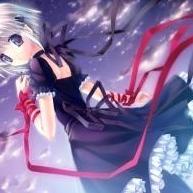
Anyone who knows japanese culture a bit better
Templarseeker reacted to Hiashi for a topic
Because anime romance has to be dragged out as long as possible across several seasons before any progress is made. And many of them are based off of light novels, which usually do have some kind of conclusion after a long story.1 point -

Grisaia Phantom Trigger Part 6
Templarseeker reacted to Clephas for a blog entry
Tbh, there isn't a lot to say about this episode. For those who were curious about Haruto's past, this pretty much reveals everything (well, since it is non-ero, it doesn't touch upon my suspicion that there was some classic Grisaia oneshota in there somewhere). It is pretty bloody - again, as usual - and it properly spotlights Haruto and the group of adults who raised him (questionable whether you can really call them adults, though). That said, it should be noted that this is obviously setting things up for the plot of the series to take a big leap forward in the next entry. As such, we can hope that the next one will be longer and the final episode of the Phantom Trigger series, so Front Wing can produce something unique (in other words, a new series, hopefully), instead of throwing us tidbits of action once or twice a year.1 point -
This is the one to read inbetween two longer titles, as it takes only about 120 hours to finish.1 point
-
1 point
-
1 point
-
1 point
-
1 point
-
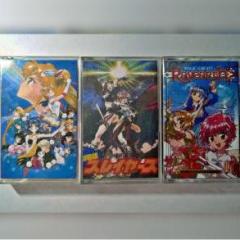
Craving a good tsundere
snowbell55 reacted to adamstan for a topic
I read it in May, and I'd say it holds up. For me it had painfully slow start, but it was just in the very beginning. Once it gained momentum, it was good. I was only disappointed by Namiki's side route - I liked her as character, but her route was pure fanservice. If you plan to replay it now, remember about sound fix: Also, running it in fullscreen mode with upscaling is neccessity, as in modern resolutions 640x480 window is so small, that reading becomes eye-straining.1 point


